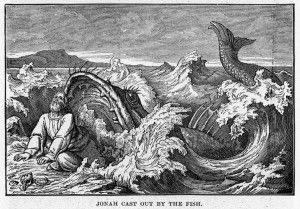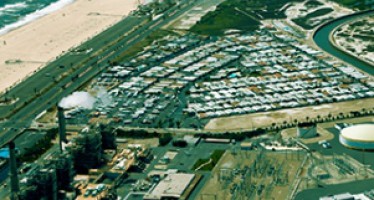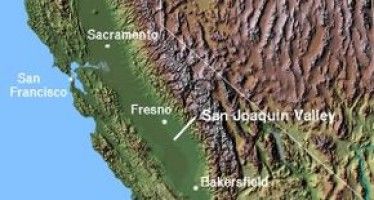Salmon eating farmers along San Joaquin River
By Wayne Lusvardi
As with the fish eating Jonah in the Bible story, salmon now are eating California farmers.
The San Joaquin River is California’s longest river, running 366 miles from the Sierra Nevadas through the Central Valley, then flowing out into San Francisco Bay.
According a recent green account by environmentalists recited in the Los Angeles Times, the San Joaquin River’s Chinook salmon, “once numbered in the hundreds of thousands … were so plentiful that farmers fed them to hogs … and settlers were kept awake at night by splashing fish as they struggled upstream to their spawning grounds.”
The reality of the old San Joaquin River was ugly: periodic natural flooding — called the “June Rise” — made the San Joaquin area an inland sea that “drowned” salmon, wiped out cropland, and destroyed human structures and life. Historically, salmon runs have boomed and busted over the centuries due to natural — not man-made — climate-change cycles. Dikes and dams built by farm irrigation districts were the only way that massive flooding was contained. But farmers are now being shaken down for their share of river water purportedly to restore salmon runs (and green jobs) to the seasonal dry portion of the San Joaquin River.
Environmentalists armed with court orders want to restore the dry portions of the river purportedly to renew the salmon runs. But the real story is not about the fish at all. It is about how environmental jobs programs are pushing farmers out of the dry reach of the San Joaquin River.
Photo ops for jobs funding
The Times story, “In a long, dry stretch of the San Joaquin, a sign of hope for salmon,” tells how environmentalists have experimentally relocated 104 salmon by tanker truck to the upper river to see if the fish would spawn there. Fish biologists are reported giddy over discovering 11 salmon nests, called REDDs. But this is not so much an experiment as it is a photo op for continuing the funding for environmentalists jobs. Quipped Cannon Michael, the vice president of a local farm company, “You get the same photo ops by trapping fish.”
What environmentalists are using the photo ops for is to push Congress into funding U.S. Senator Dianne Feinstein’s $1 billion San Joaquin River Restoration Act that is stalled in Congress because of the sequestration budget cutbacks. The San Joaquin River Restoration Project is essentially a redevelopment program to create 11,000 jobs.
Ninety percent of these jobs, about 9,900 jobs, would be temporary construction jobs. Six percent of the jobs, or 660 of them, would be long-term government-funded fish monitoring jobs. The remaining 4 percent of jobs, or 440 jobs, would be in tourism, river real estate sales, and tourist-related retail business. These jobs would not appear for another 10 or 15 years, however.
In other words, 60 percent of the permanent jobs would be for artificial green jobs funded by government and 40 percent would go to commercial businesses related to restoring the flows of the river along the old San Joaquin river bed. The cost per private sector permanent job created maybe 10 years from now would be more than $2 million per job.
Restoring salmon runs to the San Joaquin River is superfluous because the proposed Klamath River “wilding” and dam removal project would end up bringing salmon back into California’s rivers anyway.
As sure as salmon migrate back and forth from the ocean to upstream spawning grounds, real estate speculation, residential subdivision, and tourism will drive out farming. But right now all this is being touted as “river restoration.”
River restoration making salty farmland
The L.A. Times reports how releasing upstream water from Friant Dam to restore river flows for salmon runs has created seepage under farm fields near the river. That caused high salt content of the water and the ruination of crops and, worse, the cropland. Farmers have had to install interceptor drains at a cost of $250,000 each, paid for by higher Central Valley agricultural water rates.
The article fails to explain how, if there is no river water for irrigation, farming has thrived along the dry portion of the San Joaquin River.
The reason: The introduction of reliable water pumps and hydroelectric power in the 1920s allowed farmers to reclaim former salt-accumulated land for irrigated farmland by tapping large underground water tables.
But large-scale water resource redevelopment plans along the San Joaquin River have not included salt management. So Central Valley farmers are having their irrigation water allocation reduced and having their water rates increased to pay for farmers who have been negatively impacted by rising soil salinity along the dry portions of the San Joaquin River.
Regulate first, think later
The assumption by politicians is that the San Joaquin River can be re-engineered so that irrigated farming and artificial fish monitoring jobs, tourism, and water-oriented real estate development can all coexist. But as the Wall Street Journal has recently pointed out, the guiding principle of California policy is “regulate first, think later.” Applied to the proposed San Joaquin River restoration, this might be re-stated: create artificial jobs programs first, deal with the consequences to farmers later.
But then it might be too late to “restore” farming later due to high land salinity. Or the costs of de-salinizing farmland might be prohibitive. And the speculative commercial fishing, tourism, and real estate development businesses that might replace farming would be highly prone to economic cycles and unsustainability.
This is why salmon are eating farm jobs along the San Joaquin River. And why in California the “fish catches the man.”
Related Articles
Will Surfrider’s distortions block Orange County desalination plant?
“Please join us in protecting our coast and ocean by sending the Coastal Commission a message today: DENY THE HUNTINGTON
California’s disappearing farmland
More than 370,000 acres of California’s irrigated farmland disappeared from 2006-10. Officials are concerned that hundreds of thousands of
Government incompetence behind Bay Bridge fiasco
July 9, 2013 By Chris Reed The latest revelations about the Bay Bridge’s construction shortcomings point straight to incompetence as





